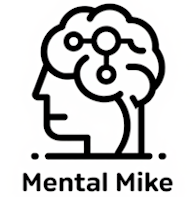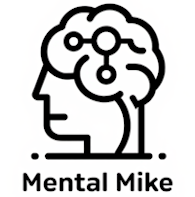Healing requires more than insight—it requires rewiring. And meditation, long revered as a spiritual discipline, is now firmly supported by neuroscience as one of the most effective tools for doing exactly that.
When practiced consistently, meditation alters the architecture of the brain. It builds emotional resilience, quiets the survival circuitry of trauma, and restores access to the higher executive functions needed for recovery. But there’s more. In the Unified Flux Model (UFM), meditation is not just a brain-training technique. It is a spiritual recalibration of energy, attention, and coherence. This blog explores how the marriage of neuroplasticity and meditation creates a powerful healing engine, especially for individuals in recovery from addiction, trauma, and emotional fragmentation.
What Is Neuroplasticity—and Why Does It Matter in Recovery?
Neuroplasticity is the brain’s ability to rewire itself in response to experience. It’s what allows you to learn, adapt, and - most critically - heal from psychological injury. Research shows that both acute trauma and long-term addiction can damage key brain regions such as the prefrontal cortex (executive function), the anterior cingulate cortex (emotional regulation), and the hippocampus (memory integration) (Volkow et al., 2016; Teicher & Samson, 2016). These changes impair impulse control, disrupt self-awareness, and flood the system with fear-driven reactivity.
Neuroplasticity, however, makes recovery possible. The brain can forge new pathways. With the right inputs (attention, repetition, regulation) it can shift from survival to integration. Meditation provides those inputs.
How Meditation Heals the Brain
Meditation activates the very systems that addiction and trauma disable. Numerous studies show that regular mindfulness and contemplative practice can:
From a purely biological perspective, meditation is medicine. But in the Unified Flux Model, its power runs deeper. Meditation is a spiritual ritual that aligns thought, emotion, breath, and energy into a state of coherence. It doesn’t just repair the brain, it realigns the self.
Meditation in the UFM Framework: Conscious Energy Alignment
In UFM, meditation is more than silence, it is intentional alignment. Every guided meditation in the 26-week program is designed to support the restoration of energetic coherence across three layers:
This model draws from quantum field theory, which suggests that all particles are entangled in a web of interdependent energy (Bohm, 1993). Through meditative practice, individuals learn to attune their internal energy to this greater field, moving from chaos to resonance. Many clients describe this not as “thinking differently,” but as feeling restored. They don’t just make better choices, they vibrate from a different place.
Why Meditation Accelerates Recovery
Trauma and addiction shorten time, constrict perception, and trap individuals in repetitive loops. Meditation restores neural spaciousness. It opens windows of possibility and reawakens the reflective functions needed to change behavior from the inside out.
Meditation also builds affect tolerance - the ability to feel pain or discomfort without running from it. This is essential in recovery, where emotions often feel overwhelming or unmanageable. In a trauma-informed context, meditation becomes a safe reentry into the body, the self, and the moment. Studies show that mindfulness training increases parasympathetic tone, lowers cortisol levels, and enhances resilience to stress (Goyal et al., 2014). These biological shifts translate to emotional and spiritual ones.
For those following the UFM path, meditation is the bridge between neuroplasticity and meaning. It helps the brain change, but it also helps the person return.
Start Small, Go Deep
Meditation doesn’t require perfection. In fact, trauma survivors often need brief, body-based meditations to begin. That’s why UFM offers a progressive meditation track, starting with 90-second breathing rituals and expanding into full sessions as nervous system capacity increases.
The goal is not transcendence. It’s presence.
And in that presence, neuroplasticity begins. Energy shifts. Spirit remembers.
When practiced consistently, meditation alters the architecture of the brain. It builds emotional resilience, quiets the survival circuitry of trauma, and restores access to the higher executive functions needed for recovery. But there’s more. In the Unified Flux Model (UFM), meditation is not just a brain-training technique. It is a spiritual recalibration of energy, attention, and coherence. This blog explores how the marriage of neuroplasticity and meditation creates a powerful healing engine, especially for individuals in recovery from addiction, trauma, and emotional fragmentation.
What Is Neuroplasticity—and Why Does It Matter in Recovery?
Neuroplasticity is the brain’s ability to rewire itself in response to experience. It’s what allows you to learn, adapt, and - most critically - heal from psychological injury. Research shows that both acute trauma and long-term addiction can damage key brain regions such as the prefrontal cortex (executive function), the anterior cingulate cortex (emotional regulation), and the hippocampus (memory integration) (Volkow et al., 2016; Teicher & Samson, 2016). These changes impair impulse control, disrupt self-awareness, and flood the system with fear-driven reactivity.
Neuroplasticity, however, makes recovery possible. The brain can forge new pathways. With the right inputs (attention, repetition, regulation) it can shift from survival to integration. Meditation provides those inputs.
How Meditation Heals the Brain
Meditation activates the very systems that addiction and trauma disable. Numerous studies show that regular mindfulness and contemplative practice can:
- Increase gray matter density in the hippocampus (memory, contextual awareness)
- Reduce amygdala volume, decreasing fear reactivity
- Enhance connectivity between the prefrontal cortex and limbic brain
- Stabilize the default mode network, reducing rumination and self-criticism
- (Lazar et al., 2005; Tang et al., 2015; Brewer et al., 2011)
From a purely biological perspective, meditation is medicine. But in the Unified Flux Model, its power runs deeper. Meditation is a spiritual ritual that aligns thought, emotion, breath, and energy into a state of coherence. It doesn’t just repair the brain, it realigns the self.
Meditation in the UFM Framework: Conscious Energy Alignment
In UFM, meditation is more than silence, it is intentional alignment. Every guided meditation in the 26-week program is designed to support the restoration of energetic coherence across three layers:
- Neural Coherence – regulating the mind and body through breath, rhythm, and stillness
- Energetic Coherence – reconnecting fragmented emotional frequencies with the higher vibrational state of the present self
- Spiritual Coherence – entering into the Field of Flux, the shared vibrational matrix from which healing intention emerges
This model draws from quantum field theory, which suggests that all particles are entangled in a web of interdependent energy (Bohm, 1993). Through meditative practice, individuals learn to attune their internal energy to this greater field, moving from chaos to resonance. Many clients describe this not as “thinking differently,” but as feeling restored. They don’t just make better choices, they vibrate from a different place.
Why Meditation Accelerates Recovery
Trauma and addiction shorten time, constrict perception, and trap individuals in repetitive loops. Meditation restores neural spaciousness. It opens windows of possibility and reawakens the reflective functions needed to change behavior from the inside out.
Meditation also builds affect tolerance - the ability to feel pain or discomfort without running from it. This is essential in recovery, where emotions often feel overwhelming or unmanageable. In a trauma-informed context, meditation becomes a safe reentry into the body, the self, and the moment. Studies show that mindfulness training increases parasympathetic tone, lowers cortisol levels, and enhances resilience to stress (Goyal et al., 2014). These biological shifts translate to emotional and spiritual ones.
For those following the UFM path, meditation is the bridge between neuroplasticity and meaning. It helps the brain change, but it also helps the person return.
Start Small, Go Deep
Meditation doesn’t require perfection. In fact, trauma survivors often need brief, body-based meditations to begin. That’s why UFM offers a progressive meditation track, starting with 90-second breathing rituals and expanding into full sessions as nervous system capacity increases.
The goal is not transcendence. It’s presence.
And in that presence, neuroplasticity begins. Energy shifts. Spirit remembers.



